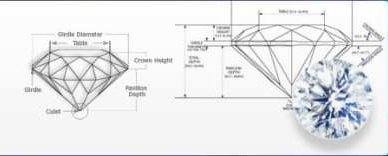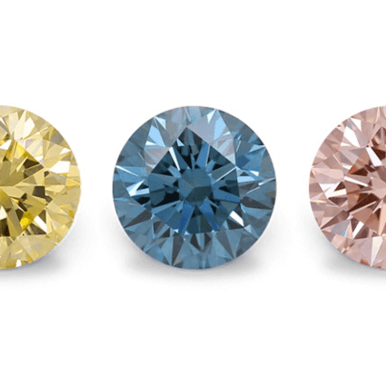I2 and I3 Lab-Grown Diamond Guide
Diamonds with I clarity are found at the bottom of the GIA Diamond Clarity Chart. GIA's description of I, also known as "Included", diamonds mentions that these stones have inclusions that are readily apparent when viewed under 10× magnification, and these inclusions may have an effect on the diamond's transparency and its ability to sparkle.
What Are I2 Lab-Grown Diamond?
I2 clarity is a grading category for diamonds, and it falls second from the lowest end on the clarity scale. It sits between the I3 clarity grade (which is the lowest) and the I1 clarity grade (which is slightly better in terms of clarity).
When we talk about I2 clarity diamonds, it's important to note that they exhibit visible inclusions that can be easily seen with the naked eye. However, these I2 diamonds possess more brilliance and sparkle compared to lower-grade I3 diamonds.
Clarity plays a significant role in defining the beauty of a diamond. The presence of numerous inclusions within a stone can obstruct the passage of light, affecting its overall appearance. I2 lab-grown diamonds, with their visible inclusions, may also carry a higher risk of breakage or chipping, particularly when the inclusions extend to the diamond's surface.
Some I2 lab diamonds have distinct marks or inclusions within them, often noticeable due to their dark coloration. In contrast, white feather-like inclusions are less prominent. When considering an I2 lab-created diamond, it's essential to look for even dispersion of white inclusions.
Lower-clarity diamonds can be a cost-effective option for various jewelry pieces, such as diamond tennis chains or diamond line bracelets. In cases where diamonds match well in terms of color, clarity may not be the top priority for some buyers.
What Are I3 Lab-grown Diamonds?
I3 diamonds represent the lowest or poorest clarity grade within the GIA Scale for diamond clarity assessment. In this context, the "I" in I3 stands for inclusions or imperfections. The number "3" in the I3 grade indicates its position as the third-lowest within the Included diamond category of the diamond clarity scale.
Diamonds graded as I3 have a greater number of imperfections compared to those with higher clarity grades. Whether an I3 gemstone is a suitable choice depends on its intended use and purpose of purchase.
I3 vs. I2 Lab-Grown Diamonds
For those who may be confused about the distinction between I3 and I2 man-made diamonds, we've provided a comparison below to illustrate the difference. As you can see, the right-side stone with an I3 clarity grade has a higher concentration of inclusions within the stone. These additional inclusions reduce the amount of light that passes through the diamond, diminishing its brightness and overall appeal.
Our recommendation to consumers is to opt for stones with a minimum clarity rating of SI2. Anything below this may not be worthwhile, particularly if you're looking for a larger stone.

The I2 and I3 Lab-Grown Diamond Prices
Diamonds with I1, I2, and I3 clarity grades are generally regarded as the less valuable options in the diamond market. While they offer affordability, they may not meet the highest quality standards. If you're working within a limited budget, it's possible to find gemstones with better quality and value than those falling into the I1-I3 range without exceeding your financial constraints.
Exploring smaller carat weight diamonds with a VS2 clarity grade can provide cost-effective alternatives. Furthermore, you can consider larger lab-grown diamonds with an SI1 clarity grade, which still offer good value. Another approach to saving on diamond costs is to opt for lower color grades, which can help you acquire a diamond that is both budget-friendly and attractive.
Is It Worth Buying I2 or I3 Lab-Grown Diamonds?
Purchasing I3 diamonds requires careful consideration beyond just their affordability. Given their low position on the diamond grading scale, they often have noticeable inclusions that reduce their brilliance and make them appear less clear. When making important purchases like diamond rings or jewelry, it's crucial to resist the temptation of their lower price and instead consider diamonds with higher clarity grades for better overall quality.






















